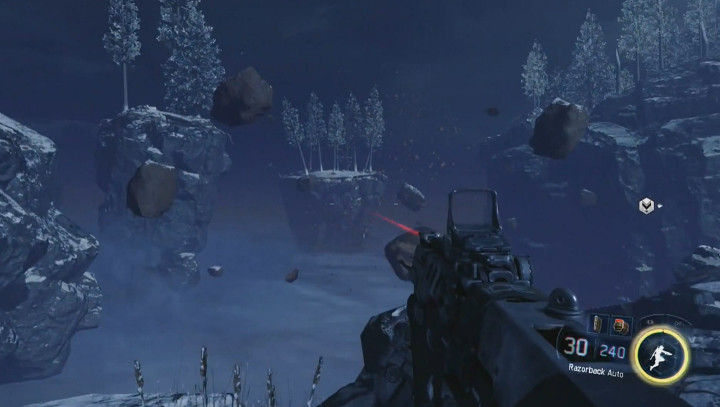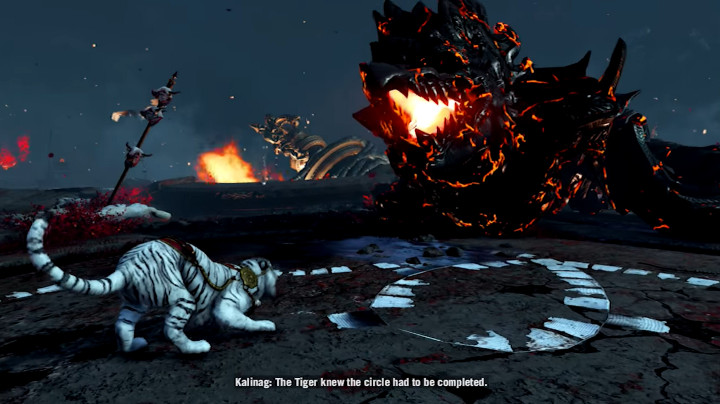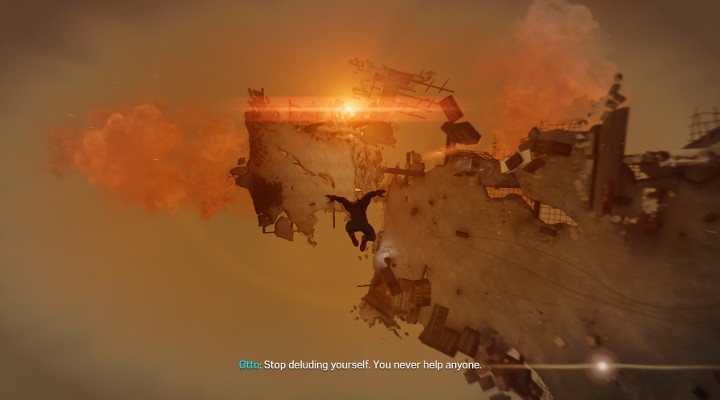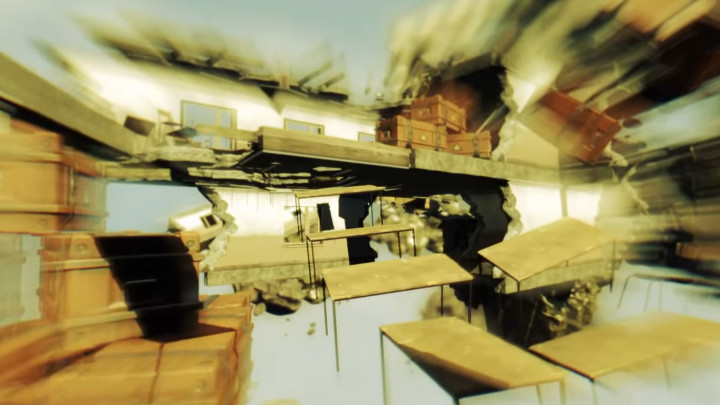
Stop me if you heard this one.
You’re smack in the middle of playing an action game, and the protagonist starts hallucinating for some reason. Suddenly, the character is floating in the sky, and there are disconnected chunks of buildings scattered everywhere. Gravity suddenly works like it does in Super Mario Galaxy.
The character’s goal is to hop from chunk of land to chunk of land while wrestling their inner demons and hearing the game’s central themes repeated in an echoey, dreamlike voice (usually the voice of either the game’s antagonist or the protagonist’s love interest). The character is also probably hitting the emotional climax of their story arc at this point.

If you’ve played a single story-heavy action game in the past ten years, you’ve probably played this sequence. The Far Cry games do it all the time (Far Cry 4‘s, pictured above, were particularly gorgeous). Arkham Asylum did it. Dying Light did it. Metro 2033 did it. Uncharted 3 kind of did it (come on, Naughty Dog, I thought you were better than this). Freaking Call of Duty: Black Ops 3 did it.
If you don’t believe me, just pick any random story-heavy action game made between 2010 and 2020 and Google the game’s name followed by “hallucination,” then watch whatever YouTube video comes up. (I think Red Dead Redemption 2 skipped it, though Arthur Morgan did start seeing a deer a whole lot.)
I was recently playing Marvel’s Spider-Man, expecting this to finally be a game that avoided this long-tired trope. Nope, Marvel’s Spider-Man does it as well.

The thing is, this was actually an interesting concept at one point. You remove a video game character from the situation they’ve grown comfortable with, while rearranging the game’s physics and creating a completely new look and feel for the world — this is a really good way to get the player’s attention. And when you can bring together the key themes of the game’s narrative, and hit the apex of a character’s emotional arc at the same time, then baby, you’ve got a stew going.
The problem isn’t that this was ever a bad idea. It wasn’t. But it’s been done so many times that it’s sort of just expected at this point. What once felt innovative and interesting now feels mundane.
The thing about innovation is that it creates momentum. Once you’ve started innovating something (interactive storytelling, in the case of the hallucination sequence trope), it’s jarring to slam the breaks.

And I guess that’s what really gets me about these hallucination sequences. The pattern was created at least a decade ago, and it hasn’t changed since. Someone slammed on the breaks, and game creators stopped innovating these sequences, essentially copy/pasting from the last dozen games that did it. Now, these hallucination sequences only grab your attention in the sense that this is where you’ll do a massively exaggerated eyeroll. “Not this again.”
The first time I experienced one of these sequences (2009’s Arkham Asylum feels like it might have been my first, though it’s hard to remember for certain), I was blown away. It still felt interesting when I encountered it in Far Cry 3, and in Far Cry 4 it felt like a natural progression from the previous game. But Far Cry 4 came out in 2014, when the PS4 was still just a wee little baby. We’re less than a month away from the launch of the PS5 and this trope is still cropping up in current video games.
For the sake of the evolution of video games as a storytelling medium, can we please move on? Can we maybe skip the hallucination thing and try something more interesting?
With a new console generation around the corner, I really hope we can put this trope to rest for a while.